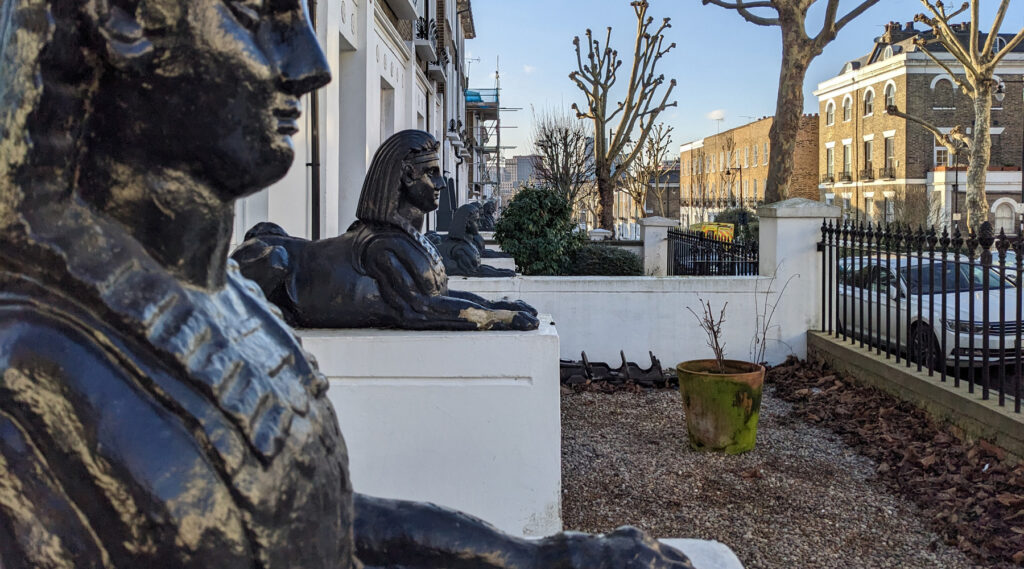There’s a street in Islington with a most unusual set of decorations for the houses – long rows of Egyptian Sphinxes outside their front doors.
Quite why they are there is however a bit of a mystery.
This is Richmond Avenue, part of the Thornhill Estate which was laid out between 1810-52 by Joseph Kay on land owned by the Thornhill family, who had acquired what was at the time mostly fields for dairy farms.
A few houses were built in what was originally called Richmond Terrace in the 1820s, but development was piecemeal through to the 1840s. The section of the road with the houses and the sphinxes was built by William Dennis and George Price who were partners in a number of developments in the estate.
Quite why they decided to line the doors with sphinxes is however unknown. It’s widely, and likely correctly suggested that they were added as a decorative feature as England was obsessed with Egypt at the time, but that is just speculation at the moment.
Egyptomania had been triggered by the Napoleonic campaigns in Egypt between 1798 and 1801, which was starting to see museums acquiring Egyptian antiquities, and this was also the era that the mystery of the Rosetta Stone was cracked, deciphering Egyptian hieroglyphs.
So, putting the sphinxes, with Egyptian style obelisks engraved with NILE on them would seem to be an example of a property developer trying to make their houses seem more fashionable.
This could be additionally supported by the fact that a pub on the corner of Richmond Avenue and Gainsford Street was called the Duke of Wellington — who defeated Napoleon in 1815.
There’s no documented proof though – which for such a distinctive row of house decorations seems odd, but whatever documents that may record the decision seem to have long been lost.
Richmond Terrace was renamed Richmond Road in the 1860s, and renamed again to Richmond Avenue in 1938.
Until 1970 the estate, including Thornhill Crescent, Thornhill Square, Hemingford Road and Richmond Avenue was still owned by the Thornhill estate trustees, but over a period of years, it was auctioned and sold off.
Today, the houses are still there, with their sphinxes. Some are in a bit of a shabby condition, but most are looked after and kept freshly painted. One set also has a set of slightly scary eyes inlaid in them.
Something less commented on are the doors – all the same studded design, and interestingly, some of the other houses in the road also have the same front door design – suggesting that the sphinx fronted houses might be a row of more expensive houses next to the cheaper designs?
However, whatever the reason for this dose of Eyptophillia in north London, it’s a delightfully quirky architectural feature to explore.












LOVE the two sphinxes + one tabby cat!